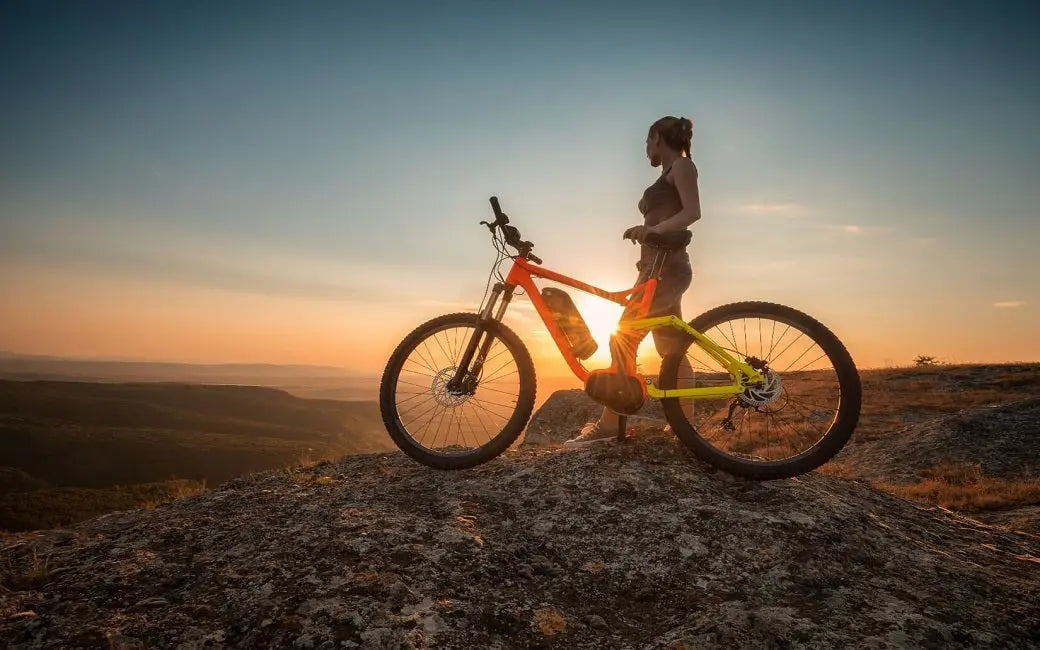
- by HOVSCO Official
How Are E-Bike Classes Defined and Why Do They Matter?
- by HOVSCO Official
E-bike classes are a regulatory framework that separates electric bikes into three categories based on their motor assistance, top speed, and throttle use. These distinctions affect where you can legally ride, what safety gear you need, and which models suit your lifestyle. Understanding e-bike classes is crucial for safety, legal compliance, and maximizing your electric bike’s potential.
Chart: Key Features of E-Bike Classes
| E-Bike Class | Pedal Assist | Throttle | Max Speed (mph) | Typical Use Cases |
|---|---|---|---|---|
| Class 1 | Yes | No | 20 | Bike paths, city, trails |
| Class 2 | Yes | Yes | 20 | Urban, commuting, leisure |
| Class 3 | Yes | Sometimes | 28 (assist only) | Fast commuting, road riding |
A Class 1 e-bike is pedal-assist only, meaning the motor provides power only when you pedal, and it stops assisting at 20 mph. These e-bike classes are widely accepted on bike paths, multi-use trails, and most city streets. Class 1 electric bikes are ideal for beginners, urban riders, and those seeking a natural cycling experience with a boost.
Class 2 e-bike classes combine pedal-assist and throttle, allowing riders to use the motor without pedaling, up to 20 mph. This makes them accessible for people with mobility challenges or those who want effortless acceleration. Class 2 electric bikes can go anywhere Class 1 bikes are allowed, but some trails or parks restrict throttle use, so always check local regulations.
Class 3 e-bike classes offer pedal-assist up to 28 mph, making them the fastest legal e-bikes. Some models may include a throttle, but it’s limited to 20 mph. Class 3 electric bikes are designed for experienced riders, fast commuting, and longer road journeys. They are typically restricted from multi-use paths and require helmets and, in some regions, a minimum rider age.
Chart: Comparison of E-Bike Classes and Usage
| Feature | Class 1 | Class 2 | Class 3 |
|---|---|---|---|
| Pedal Assist | Yes | Yes | Yes |
| Throttle | No | Yes | Sometimes |
| Max Assisted Speed | 20 mph | 20 mph | 28 mph (assist) |
| Typical Locations | Paths, trails | Urban, paths | Roads, bike lanes |
| Helmet Required | Varies | Varies | Usually mandatory |
For commuting, Class 3 e-bike classes deliver speed and efficiency, especially for longer distances. Class 1 electric bikes are perfect for trails and city riding, offering a balance of safety and accessibility. Class 2 models are versatile, suitable for both urban and recreational use, and provide the added convenience of throttle control for stop-and-go traffic or relaxed cruising.
E-bike classes dictate helmet use, age restrictions, and where you can ride. Class 3 e-bike classes often require helmets and have age minimums, while Class 1 and 2 may have more relaxed rules. Always check your local laws before riding. Understanding these distinctions helps you stay safe and avoid fines or restrictions.
All e-bike classes in the U.S. are limited to a maximum motor power of 750 watts (1 horsepower). This ensures electric bikes remain distinct from mopeds or motorcycles. The class system also limits how the motor delivers power-either through pedal-assist, throttle, or both-making it easier to choose the right electric bike for your needs.
HOVSCO e-bike classes are designed to comply with the three-class system, offering models for every type of rider. Whether you want a pedal-assist commuter, a throttle-equipped urban explorer, or a high-speed road bike, HOVSCO’s electric bikes meet regulatory standards and deliver reliable performance. Their versatility ensures you can find a HOVSCO model that fits your preferred e-bike class and riding style.
When selecting among e-bike classes, consider accessories like integrated lights, sturdy racks, and advanced displays. Class 3 electric bikes often come with enhanced brakes and tires for higher speeds. HOVSCO e-bikes offer compatibility with a variety of safety and comfort accessories, ensuring your electric bike is tailored to your needs and the demands of your chosen class.
When purchasing an electric bike, first determine which e-bike class best matches your riding habits and local regulations. Look for models with quality components, intuitive controls, and compatibility with essential accessories. HOVSCO e-bikes are engineered for safety and versatility, making them a smart choice for riders seeking compliance, performance, and comfort across all e-bike classes.
“At HOVSCO, we believe understanding e-bike classes is key to finding the perfect electric bike. Our lineup is built to meet every rider’s needs, whether you value speed, throttle convenience, or traditional pedal-assist. Choose your e-bike class wisely, and you’ll unlock a world of safe, enjoyable, and efficient cycling.”
What are the main differences between Class 1, 2, and 3 e-bike classes?
Class 1 is pedal-assist only up to 20 mph, Class 2 adds a throttle at 20 mph, and Class 3 is pedal-assist up to 28 mph, sometimes with a throttle capped at 20 mph.
Where can I ride each e-bike class?
Class 1 and 2 e-bike classes are allowed on most bike paths and trails, while Class 3 is usually restricted to roads and bike lanes.
Do all e-bike classes require a helmet?
Helmet requirements vary, but Class 3 e-bike classes almost always require helmets and may have age restrictions.
How do I choose the right e-bike class for my needs?
Consider your riding environment, speed preferences, and local laws. HOVSCO offers electric bikes in all e-bike classes to suit every rider.
Are HOVSCO e-bikes compliant with the three-class system?
Yes, HOVSCO e-bike classes are designed to meet regulatory standards for Class 1, 2, and 3 electric bikes, ensuring safe and legal riding.
Share:
What Are the 5 Best Riding Tips for All-Weather Adventure?
How to Ride Your Electric Bike in the Dark: 3 Essential Tips